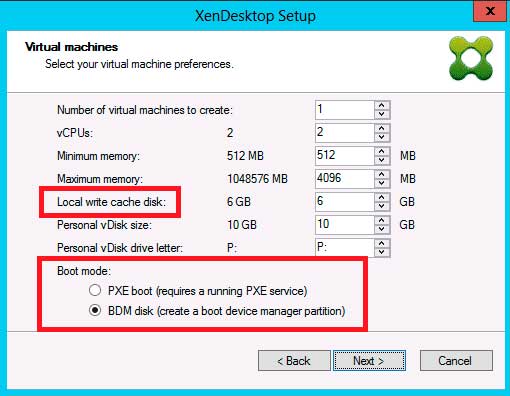Viva, Citrix Provisioning Services!
Colleagues and customers have been asking me about the future of Citrix Provisioning Services and whether they should be deploying Machine Creation Services (MCS) instead of it. Ironically, in some limited cases some overzealous Citrix sales reps and sales engineers have been propagating the idea of MCS over PVS. So let's set the record straight once and for all: Citrix PVS is not being retired and there are no plans in the foreseeable future to retire it.
How do I know this? The question has come up on the private forums of the Citrix Technology Professional CTP program and Citrix has refuted the rumors. With good reason: PVS remains one of the most scalable and robust solutions out there for XenApp and XenDesktop environments.
Now that the rumor has been put to rest, let's take a look at some of the features in the new version of the "undead" Citrix Provisioning Services 7:
XenDesktop Setup Wizard -- The tool has seen some functionality enhancement and time-saving improvements. Notable is the ability to now add "local write cache disk" from within the wizard, a step that was previously missing but accomplished by adding the vDisk to the image and then having the XenDesktop Setup Wizard clone the disk with the creation of each new VM. So now, the wizard does not have to clone each write cache disk anymore.
Another addition is the ability to choose between PXE boot or a Boot Device Manager (BDM). In many deployments a PXE server can be denied, which means BDM can be used an an alternative. Problem was, it was a process done outside of the XenDesktop Setup Wizard. Now, Citrix includes this feature, which creates a boot partition (see Fig. 1).
 |
Figure 1. XenDesktop Setup Wizard now includes BDM natively. (Click image to view larger version.) |
SMB 3.0 support -- I am a huge supporter of the SMB 3.0 protocol and while this is a function of the underlying operating system, PVS 7 now supports SMB 3.0 shares. SMB 3.0 is a very efficient and performance enhancing protocol.
VHDX support -- When coupled with the latest Hyper-V, you can now use the new and improved virtual disk format of VHDX for your write cache disks and for your Personal vDisks. However, for vDisks created and managed by PVS itself, the VHD format lives on and Citrix's reasoning for that is that it still needs to be compatible with Windows Server 2008 R2. What I wonder is, why can't the company give me the option of choosing one or the other? Some work needs to be done here. The VHDX format offers performance increase, of course, but it also means it requires automatic alignment and that can be a cause for significant performance degradation.
Those are some of my favorite new enhancements for PVS 7. While there are more that I have not covered here, this release feels like it was geared to boost Hyper-V and System Center support with many features and integration points introduced. While this is a very welcome step, as Hyper-V and System Center are most definitely capturing market share more and more everyday, I was a bit disappointed as to the VMware functionality enhancements and also at the fact that PVS remains a separate management console and infrastructure. I am looking forward to the day when the OVS console is folded into Studio.
All in all, for those of us who are fans of the PVS technology, rest assured that it lives on and you should not fear a PVS deployment. Tere is no truth to the rumor that Citrix will be retiring the technology soon, although it may seem that way from the XenDesktop 7 features that highlight MCS more.
Posted by Elias Khnaser on 07/29/2013 at 1:22 PM